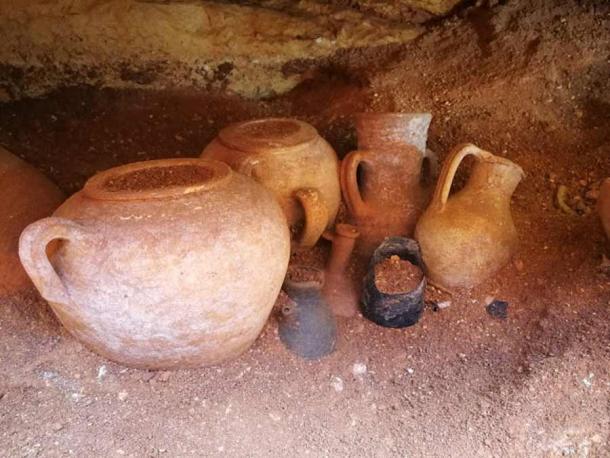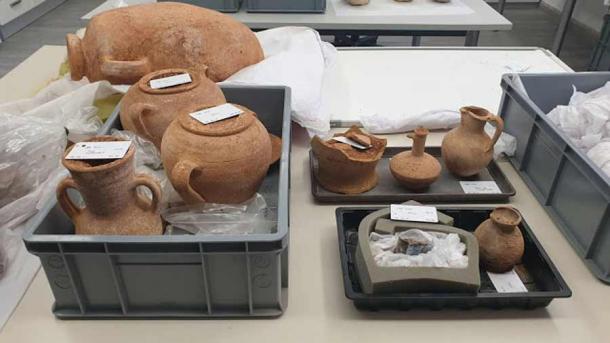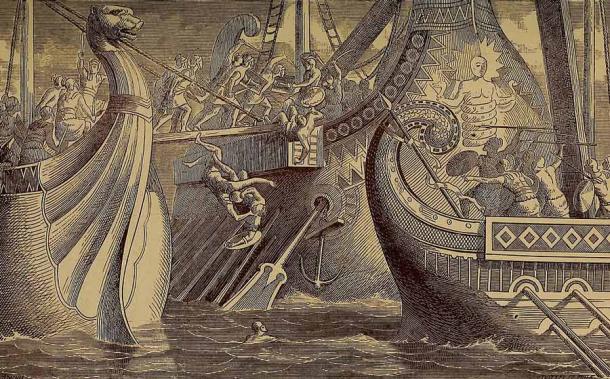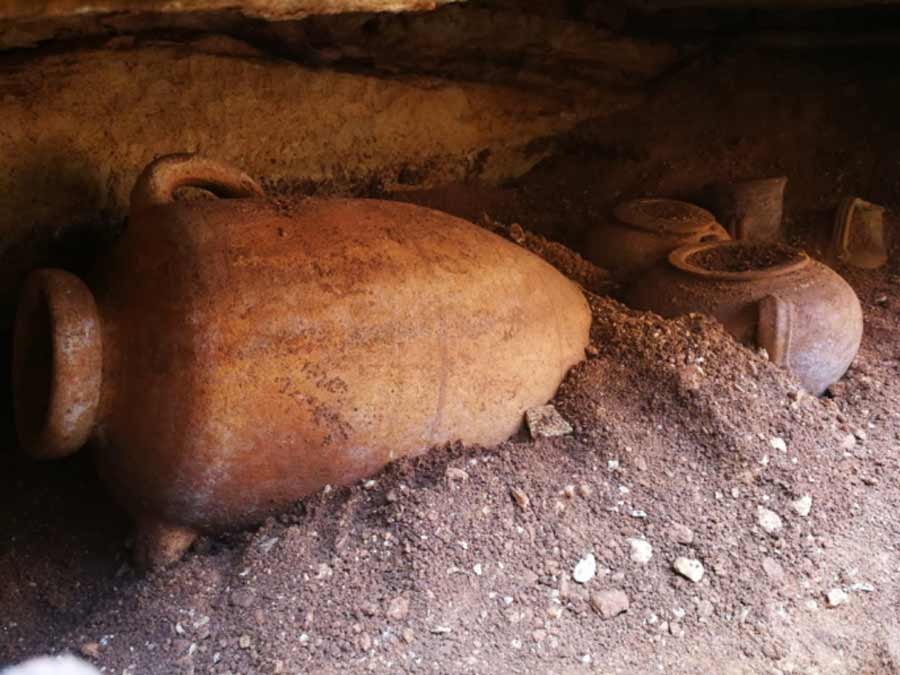2,000-Year-Old Punic-Era Tomb Accidentally Found in Malta
The archipelago of Malta in the Mediterranean Sea in southern Europe, is a place of mystique and wonder. With a rich history that commences with human occupation in 5,900 BC, archaeologists have now discovered a 2,000-year-old Punic tomb in southeastern Malta while expanding a local drainage network. It was initially thought to be 3,500 years old, during the Late Bronze Age, but further examination revealed otherwise.
The Water Services Corporation is located in Zabbar and is currently engaged in expanding the Malta drainage system towards the southern parts of the city. “Because of the archaeological sensitivity of the location, the Superintendence requested that an archaeologist accompany the crew in case any ancient remains are discovered,” explained one of their officials.

Artifacts found within the Punic tomb in Malta. (Water Service Corporation)
Artifacts Discovered in Punic Tomb in Malta
Malta Today reported that the discovery included a sealed tomb containing a number of urns with “the cremated remains of human bones.” Upon further examination, the human bones were deduced to be that of an adult and a young child. These were accompanied by burial goods, such as an amphora (an ancient Greek jar with a large oval body and a cylindrical neck, and two handles on either side), an oil lamp, a glass perfume bottle and other pottery vessels, definitely Punic.
- Mass Murder, Megalithic Music, and Misconduct in Prehistoric Malta
- Cover Up: Very Early Human Presence in Malta Has Been Intentionally Hidden
“The burial rite was altered through the Punic and Roman times. Sometimes the bodies were burnt, and other times they were buried intact in the grave,” explained the same official. “Cremation necessitated a variety of resources, including wood to burn the body and the presence of a person throughout the whole process of cremation which took several hours.”

The stash of artifacts discovered in the Punic tomb which was recently unearthed in Malta. (Water Service Corporation)
The Punics – Proud Descendants of the Phoenicians
To put this finding into context, this isn't the first Punic tomb discovered in Malta. In fact hundreds have been unearthed so far. "It has to be borne in mind that most of these tombs were found during building operations," explains George A. Said-Ammit in an article on the Punic tombs of Malta published by the Malta Historical Society.
The Punics were essentially a western Mediterranean people who were directly descended from the Phoenicians. The Punics settled in small enclaves along the Mediterranean, in locations such as Tunis, northwestern Berber Africa, western Sicily, southern Sardinia, Malta and Hispania, amongst others. They shared traits with their Phoenician ancestors, but also had a distinct culture, including their language, which was also called Punic.
Punics did not practice a monarchical system, organizing themselves into self-governing states, of which Carthage emerged at the peak of Punic rule in the 5th century BC. Carthage would be historically accorded the recognition of being the trading hub of the ancient Mediterranean, and the distinction of being the classical antiquarian world’s most important city and cultural center. The Punics were indomitable seafarers, with a strong urban culture and economy which emerged as a result of their naval exploits. They were trading as far as Atlantic Iberia, the British Isles and even the Canary Islands.

Artwork depicting the Third Punic War during which the Punics met their ruin against the Romans. (No restrictions)
The Demise of the Punics
Unfortunately, the Punics met their ruin when they faced Rome in 146 BC in the final of three Punic wars, called the Third Punic War. Carthage was redeveloped as Roman Carthage and was the Roman Empire’s first conquest and entry point into Africa. Malta had been sacked and conquered during the Second Punic War between 218 and 201 BC. Like the word “barbarian”, the term “Punic” was appropriated by the Romans to mean “treacherous”. The Umayyad invasion of Carthage in 698 AD unfortunately destroyed vital aspects of Punic culture and history forever.
- Gods of Carthage and The Punic Power House of Baal Hammon and Tanit
- Fascinating Artifacts from the Battle of the Egadi Islands are Pulled from the Depths
The Punic culture and language survived however, moving outside Carthage, and was in limited usage till Late Antiquity (roughly between the 3rd and 8th centuries AD). Although the Punics were renowned for their technical achievements in the field of developing uncolored glass, and using lacustrine limestone to improve the overall purity of iron, they were not far behind when it came to pottery. The contents of the Punic burial tomb discovered in Zabbar are currently on their way to a laboratory for the process of consolidation, cleaning and analysis, reports the Times of Malta.
Top image: Contents of the Punic tomb discovered in Malta. Source: Water Service Corporation
By Sahir Pandey



















